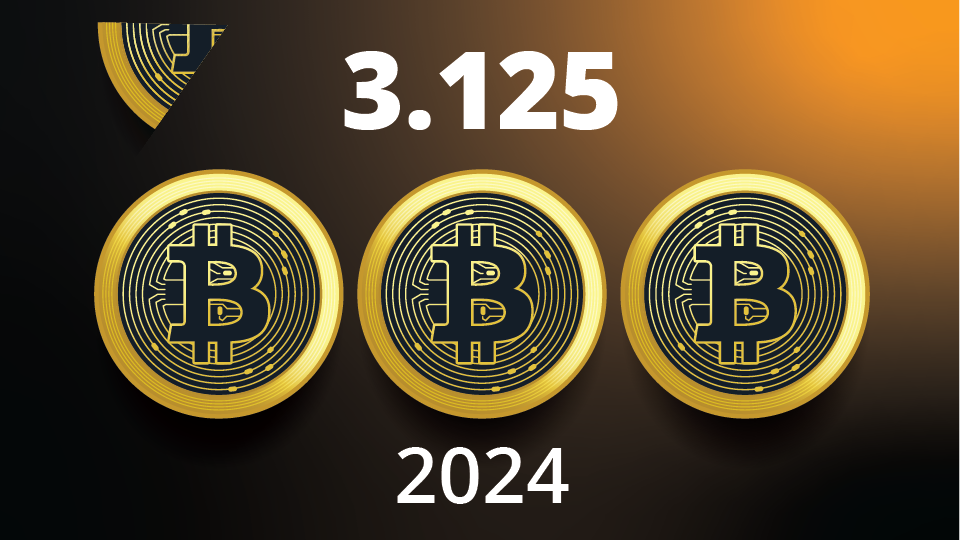What is Blockchain Technology?
February 22, 2023
Read Time 9 MIN
Blockchain technology, which was developed to enable Bitcoin, is a disruptive force for many current business practices. Blockchain, an open, secure distributed ledger that efficiently and permanently records transactions between two parties, is starting to be used in a variety of industries, from trade finance to law.
| Types of Distributed Ledgers | |||
| Public | Private | Consortium | |
| Participants | Permissionless – (pseudo)-anonymous, public read-write access | Permissioned – relies on identification and trust, no public read-write access | Permissioned – relies on identification and trust, public read access, private write access |
| Consensus mechanism | Proof-of-Work (PoW), Proof-of-Stake (PoS), etc. | Voting or multi-party consensus algorithm | Voting or multi-party consensus algorithm |
| Decentralization | High | Low | Low |
| USP | Disruptive due to disintermediation | Cost reduction | Cost reduction |
Source: VanEck, 2022.
What is a Consensus Mechanism?
A consensus mechanism is a fault-tolerant mechanism that is used in computer and blockchain systems to achieve the necessary agreement.
In cryptocurrencies, a database known as the blockchain stores information on user balances. Every person (or, more precisely, every node) must keep a duplicate copy of the database. Otherwise, you would quickly have contradicting information, which would defeat the whole point of the Bitcoin network.
By using public-key cryptography, users are prevented from using one another's currencies. To be able to identify whether funds have actually been spent, however, network participants still need to rely on a single source of truth.
Bitcoin's inventor, Satoshi Nakamoto, suggested using a Proof of Work (PoW) scheme to synchronize participants. We'll discuss how PoW functions in a moment, but first, let's look at some of the characteristics that distinguish the various consensus algorithms from one another.
First and foremost, we need validators—users who want to contribute blocks—to provide a stake. A validator's ability to act dishonestly is deterred by the stake, which is some sort of value that they are required to present. They will forfeit their stake if they lie. Computer processing power, cryptocurrencies, and even reputation are examples.
Why would they put their own resources at risk? There is, however, a prize as well. This is typically the native cryptocurrency of the protocol and is composed of fees paid by other users, newly created cryptocurrency units, or both.
Transparency is the very last thing we need. We must be able to recognize cheating when it occurs. The blocks should be expensive for them to make but inexpensive for anyone to validate.
| Types of Consensus Mechanisms | |
| Type | Description |
| Proof-of-Work (PoW) | PoW works like a decentralized lottery picking a leader to propose a new block at predictable intervals |
| Proof-of-Stake (PoS) | PoS works like PoW but uses cost of capital instead of cost of electricity as a resource, making it a greener alternative to PoW |
| Delegated-Proof-of-Stake | This is an additional layer to PoS that allows users to delegate their voting power to validators without requiring them to validate themselves |
| Proof-of-Importance (PoI) | PoI rewards users with reputation or importance scores that over time allow them to become increasingly more efficient block producers |
| Proof-of-Capacity (PoC) | PoC uses cost of storage as resource instead of electricity of capital |
| Proof-of-Elapsed-Time (PoET) | PoET uses a time-based lottery as a way to provide consensus |
| Proof-of-Activity (PoA) | PoA uses time as a resource |
| Proof-of-Authority (PoA) | PoA relies on validators’ reputation to provide consensus |
| Proof-of-Burn (PoB) | PoB relies on cost of capital as a resource, burning is similar to staking with an infinite lock-up duration |
| Byzantine Fault Tolerance Algorithm (BFT) | BFT relies on reputation, voting power and known identities |
Source: VanEck, 2022.
What is Crypto Mining?
The father of blockchain consensus methods is Proof of Work (PoW)
The idea has been known for a while, but Bitcoin was the first to use it. Validators (also known as miners) hash the data they want to contribute in Proof of Work until they find a particular solution.
When data is passed through a hash function, an apparently random string of letters and numbers is produced, known as a hash. But if you use the same data repeatedly, you'll always get the same result. However, even a minor change will result in a completely different hash.
You cannot possibly determine what data was input into the function by looking at the result. They are consequently helpful in demonstrating your prior knowledge of information. When you later release the data, you can give someone its hash, and they can use it to run the function on it to verify that the output is the same.
Learn More About PoW
The Proof of Work protocol lays forth the requirements for what constitutes a valid block. For example, it can specify that only blocks whose hash starts with 00 are valid. The miner must use brute-force inputs in order to build one that matches that combination. They can tweak a parameter in their data to produce a different outcome for every guess until they get the right hash.
The standards for major blockchains are rather high. You would require a large warehouse full of specialized hashing equipment (ASICs) to compete with other miners and have a chance of producing a valid block.
When mining, the price of the equipment and electricity needed to power it are your stake. ASICs are designed with only one use in mind, hence they are useless for everything outside cryptocurrency mining. You must mine in order to recover your initial investment, and if you are successful in adding a new block to the blockchain, you will be rewarded handsomely.
The network can easily confirm that you did, in fact, produce the correct block. They just need to run your data through a function once, even though as a miner you tried trillions of different combinations to obtain the proper hash. Your data will be accepted if it generates a legitimate hash, and you'll receive a reward. If not, the network will reject it, costing you time and electricity in vain.
What is Crypto Staking?
Staking cryptocurrency entails dedicating one's crypto assets to a blockchain network for a predetermined period of time in order to support the network's transaction confirmation.
Some cryptocurrencies pay significant rates of interest for such a commitment, so staking might be an excellent method to leverage your crypto assets to make money.
In the beginning, Proof of Stake (PoS) was suggested as a Proof of Work substitute for Bitcoin. A PoS system doesn't have the idea of miners, specialized equipment, or high energy usage. All you require is a standard PC.
Learn More About PoS
“All you require is a standard PC” is not the full story. You still need to invest some money. In PoS, you propose an internal resource—cryptocurrency—rather than an external one (such as hardware or electricity). Every protocol has its own set of rules, but generally speaking, in order to be eligible for staking, you must hold a certain minimum quantity of money.
After that, you secure your money in a wallet so that it cannot be changed while you are staking. Usually, you and the other validators will agree on which transactions should be included in the upcoming block. You could say that you're making a wager on the block that the protocol will pick.
Depending on your stake, you will receive a share of the transaction fees if your block is chosen. You stand to gain more if you have more money locked up. However, if you try to defraud by submitting fraudulent transactions, you could lose some or all of your interest. As a result, we have a mechanism that is comparable to PoW: being honest is more profitable than being dishonest.
Typically, the compensation for validators does not include newly minted coins. Thus, another method must be used to issue the native money of the blockchain. This can be accomplished either by an initial distribution (such as an ICO or IEO) or by launching the protocol with PoW before switching to PoS later on.
Pure versions of Proof of Stake have primarily only been used in small-cap coins up until now. As a result, it's uncertain if it can be a practical replacement for PoW. Although it seems reasonable in theory, it will work completely differently in actuality.
When PoS is implemented on a network with significant value, the system turns into a game with financial incentives. The only way to determine whether it is possible is on a live network because anyone who has the knowledge to "hack" a PoS system is probably only going to do so if they stand to benefit something from it.
Use of Cryptography in Distributed Ledgers
A number of mechanisms, including sophisticated cryptography methods and models of human behavior and decision-making (game-theory), are used to safeguard blockchains.
The majority of cryptocurrency systems are built on the blockchain technology, which makes it impossible for this type of digital currency to be copied or destroyed.
Other applications for blockchain technology are being investigated where data immutability and security are very important. Keeping track of charitable donations, maintaining medical records, and supply chain management are a few examples.
Blockchain security is not, however, a straightforward topic. Understanding the fundamental ideas and procedures that give these cutting-edge systems strong protection is crucial.
Learn More About Security
To ensure the security of their data, blockchains mainly rely on cryptography. The so-called cryptographic hashing functions play a crucial role in this context. In the process of hashing, an algorithm (hash function) accepts inputs of arbitrary size and produces outputs (hashes) with predictable and fixed sizes (or length).
The output will always present the same length, regardless of the size of the input. The output, however, will be quite different if the input changes. No matter how many times you run the hash function, if the input doesn't change, the output hash will always be the same.
These output numbers, also referred to as hashes, serve as distinctive identifiers for data blocks within blockchains. A chain of linked blocks is made possible by the fact that each block's hash is computed in respect to the hash of the one before it. The block hash is reliant on the contents in that block, hence any modification to the data would necessitate a modification to the block hash.
As a result, the hash of each block is created using the data in that block as well as the hash of the block before it. The security and immutability of the blockchain are significantly enhanced by these hash identifiers.
The consensus techniques used to verify transactions also make use of hashing. For instance, the Proof of Work (PoW) method on the Bitcoin blockchain uses the SHA-256 hash function. According to its name, SHA-256 generates a hash that is 256 bits, or 64 characters, long from the data given.
Cryptography plays a part in assuring the security of the wallets used to hold cryptocurrency units, in addition to protecting transaction records on ledgers. Asymmetric or public-key cryptography is used to generate the paired public and private keys that allow users to receive and send payments, respectively. Digital signatures for transactions are created using private keys, making it feasible to verify who owns the transmitted money.
Because of the nature of asymmetric cryptography, only the owner of the private key can access the money held in a cryptocurrency wallet, keeping that money secure until the owner decides to spend it (as long as the private key is not shared or compromised).
To receive more Digital Assets insights, sign up in our subscription center.
Related Topics
Related Insights
DISCLOSURES
Definitions
Bitcoin (BTC) is a decentralized digital currency, without a central bank or single administrator, that can be sent from user to user on the peer-to-peer bitcoin network without the need for intermediaries. Beta of rig price is a measure of the price volatility of a mining rig compared to Bitcoin’s price.
Hash rate is a measure of the computational power on a blockchain network.
Please note that VanEck may offer investments products that invest in the asset class(es) or industries included in this communication.
This is not an offer to buy or sell, or a solicitation of any offer to buy or sell any of the cryptocurrencies mentioned herein. The information presented does not involve the rendering of personalized investment, financial, legal, or tax advice. Certain statements contained herein may constitute projections, forecasts and other forward looking statements, which do not reflect actual results. Information provided by third-party sources are believed to be reliable and have not been independently verified for accuracy or completeness and cannot be guaranteed. Any opinions, projections, forecasts, and forward-looking statements presented herein are valid as of the date of this communication and are subject to change without notice. The information herein represents the opinion of the author(s), but not necessarily those of VanEck or its employees.
Cryptocurrency is a digital representation of value that functions as a medium of exchange, a unit of account, or a store of value, but it does not have legal tender status. Cryptocurrencies are sometimes exchanged for U.S. dollars or other currencies around the world, but they are not generally backed or supported by any government or central bank. Their value is completely derived by market forces of supply and demand, and they are more volatile than traditional currencies. The value of cryptocurrency may be derived from the continued willingness of market participants to exchange fiat currency for cryptocurrency, which may result in the potential for permanent and total loss of value of a particular cryptocurrency should the market for that cryptocurrency disappear. Cryptocurrencies are not covered by either FDIC or SIPC insurance. Legislative and regulatory changes or actions at the state, federal, or international level may adversely affect the use, transfer, exchange, and value of cryptocurrency.
Investing in cryptocurrencies comes with a number of risks, including volatile market price swings or flash crashes, market manipulation, and cybersecurity risks. In addition, cryptocurrency markets and exchanges are not regulated with the same controls or customer protections available in equity, option, futures, or foreign exchange investing. There is no assurance that a person who accepts a cryptocurrency as payment today will continue to do so in the future.
Investors should conduct extensive research into the legitimacy of each individual cryptocurrency, including its platform, before investing. The features, functions, characteristics, operation, use and other properties of the specific cryptocurrency may be complex, technical, or difficult to understand or evaluate. The cryptocurrency may be vulnerable to attacks on the security, integrity or operation, including attacks using computing power sufficient to overwhelm the normal operation of the cryptocurrency’s blockchain or other underlying technology. Some cryptocurrency transactions will be deemed to be made when recorded on a public ledger, which is not necessarily the date or time that a transaction may have been initiated.
Investors must have the financial ability, sophistication and willingness to bear the risks of an investment and a potential total loss of their entire investment in cryptocurrency.
- An investment in cryptocurrency is not suitable or desirable for all investors.
- Cryptocurrency has limited operating history or performance.
- Fees and expenses associated with a cryptocurrency investment may be substantial.
There may be risks posed by the lack of regulation for cryptocurrencies and any future regulatory developments could affect the viability and expansion of the use of cryptocurrencies. Investors should conduct extensive research before investing in cryptocurrencies.
Information provided by Van Eck is not intended to be, nor should it be construed as financial, tax or legal advice. It is not a recommendation to buy or sell an interest in cryptocurrencies.
All investing is subject to risk, including the possible loss of the money you invest. As with any investment strategy, there is no guarantee that investment objectives will be met and investors may lose money. Diversification does not ensure a profit or protect against a loss in a declining market. Past performance is no guarantee of future performance.
© 2023 Van Eck Securities Corporation, Distributor, a wholly owned subsidiary of Van Eck Associates Corporation.
Related Funds
DISCLOSURES
Definitions
Bitcoin (BTC) is a decentralized digital currency, without a central bank or single administrator, that can be sent from user to user on the peer-to-peer bitcoin network without the need for intermediaries. Beta of rig price is a measure of the price volatility of a mining rig compared to Bitcoin’s price.
Hash rate is a measure of the computational power on a blockchain network.
Please note that VanEck may offer investments products that invest in the asset class(es) or industries included in this communication.
This is not an offer to buy or sell, or a solicitation of any offer to buy or sell any of the cryptocurrencies mentioned herein. The information presented does not involve the rendering of personalized investment, financial, legal, or tax advice. Certain statements contained herein may constitute projections, forecasts and other forward looking statements, which do not reflect actual results. Information provided by third-party sources are believed to be reliable and have not been independently verified for accuracy or completeness and cannot be guaranteed. Any opinions, projections, forecasts, and forward-looking statements presented herein are valid as of the date of this communication and are subject to change without notice. The information herein represents the opinion of the author(s), but not necessarily those of VanEck or its employees.
Cryptocurrency is a digital representation of value that functions as a medium of exchange, a unit of account, or a store of value, but it does not have legal tender status. Cryptocurrencies are sometimes exchanged for U.S. dollars or other currencies around the world, but they are not generally backed or supported by any government or central bank. Their value is completely derived by market forces of supply and demand, and they are more volatile than traditional currencies. The value of cryptocurrency may be derived from the continued willingness of market participants to exchange fiat currency for cryptocurrency, which may result in the potential for permanent and total loss of value of a particular cryptocurrency should the market for that cryptocurrency disappear. Cryptocurrencies are not covered by either FDIC or SIPC insurance. Legislative and regulatory changes or actions at the state, federal, or international level may adversely affect the use, transfer, exchange, and value of cryptocurrency.
Investing in cryptocurrencies comes with a number of risks, including volatile market price swings or flash crashes, market manipulation, and cybersecurity risks. In addition, cryptocurrency markets and exchanges are not regulated with the same controls or customer protections available in equity, option, futures, or foreign exchange investing. There is no assurance that a person who accepts a cryptocurrency as payment today will continue to do so in the future.
Investors should conduct extensive research into the legitimacy of each individual cryptocurrency, including its platform, before investing. The features, functions, characteristics, operation, use and other properties of the specific cryptocurrency may be complex, technical, or difficult to understand or evaluate. The cryptocurrency may be vulnerable to attacks on the security, integrity or operation, including attacks using computing power sufficient to overwhelm the normal operation of the cryptocurrency’s blockchain or other underlying technology. Some cryptocurrency transactions will be deemed to be made when recorded on a public ledger, which is not necessarily the date or time that a transaction may have been initiated.
Investors must have the financial ability, sophistication and willingness to bear the risks of an investment and a potential total loss of their entire investment in cryptocurrency.
- An investment in cryptocurrency is not suitable or desirable for all investors.
- Cryptocurrency has limited operating history or performance.
- Fees and expenses associated with a cryptocurrency investment may be substantial.
There may be risks posed by the lack of regulation for cryptocurrencies and any future regulatory developments could affect the viability and expansion of the use of cryptocurrencies. Investors should conduct extensive research before investing in cryptocurrencies.
Information provided by Van Eck is not intended to be, nor should it be construed as financial, tax or legal advice. It is not a recommendation to buy or sell an interest in cryptocurrencies.
All investing is subject to risk, including the possible loss of the money you invest. As with any investment strategy, there is no guarantee that investment objectives will be met and investors may lose money. Diversification does not ensure a profit or protect against a loss in a declining market. Past performance is no guarantee of future performance.
© 2023 Van Eck Securities Corporation, Distributor, a wholly owned subsidiary of Van Eck Associates Corporation.




